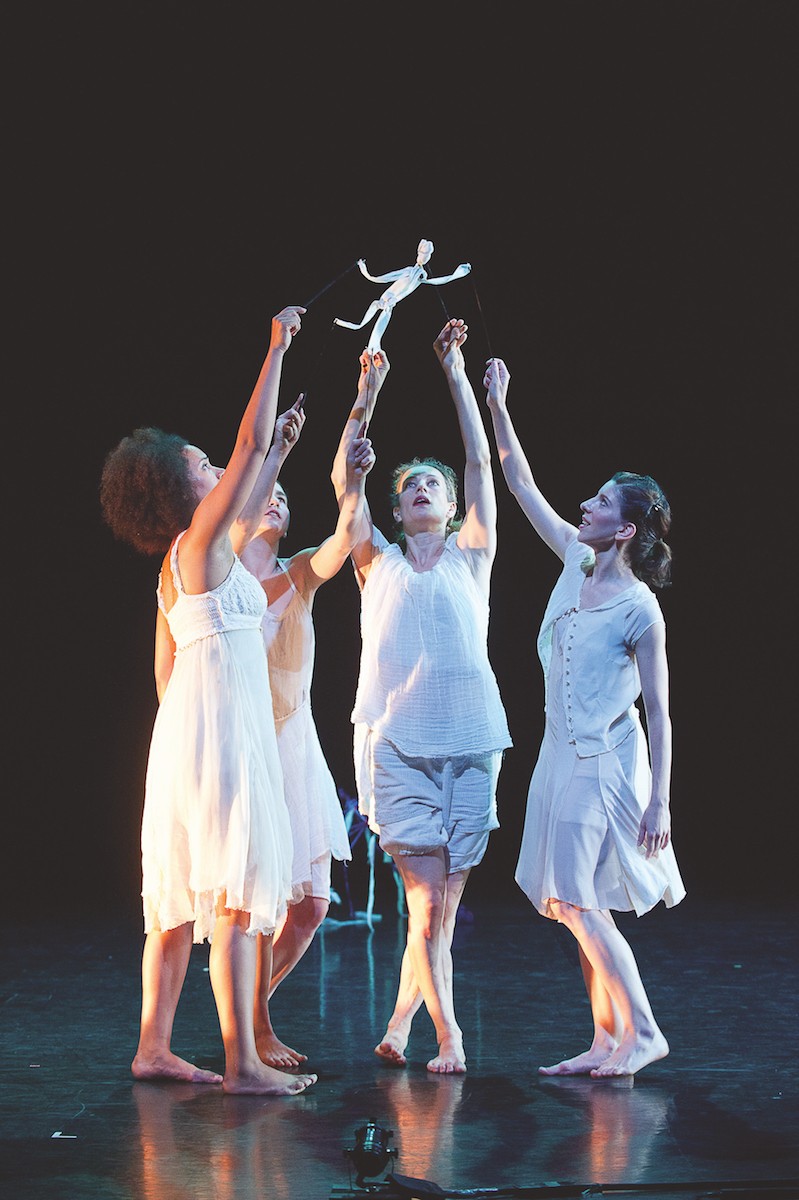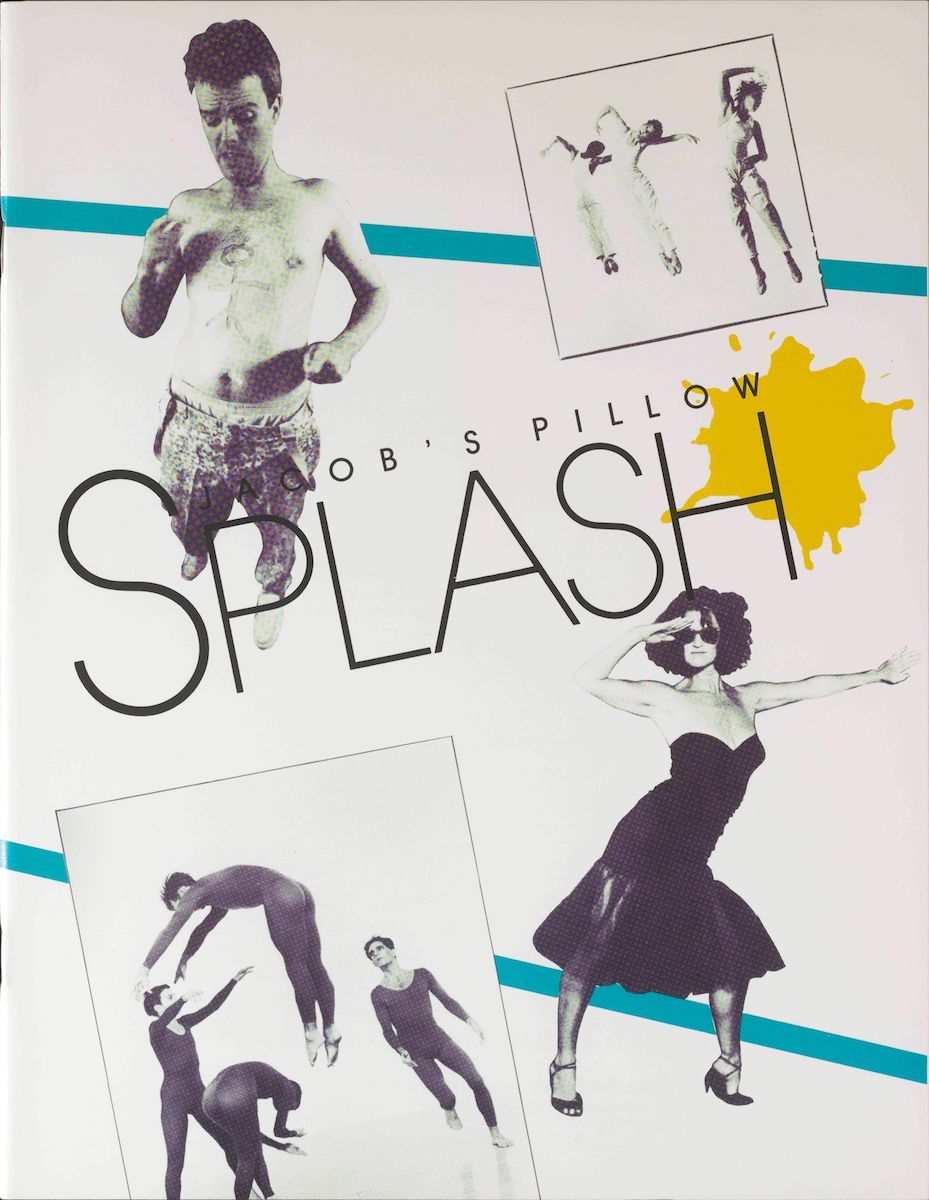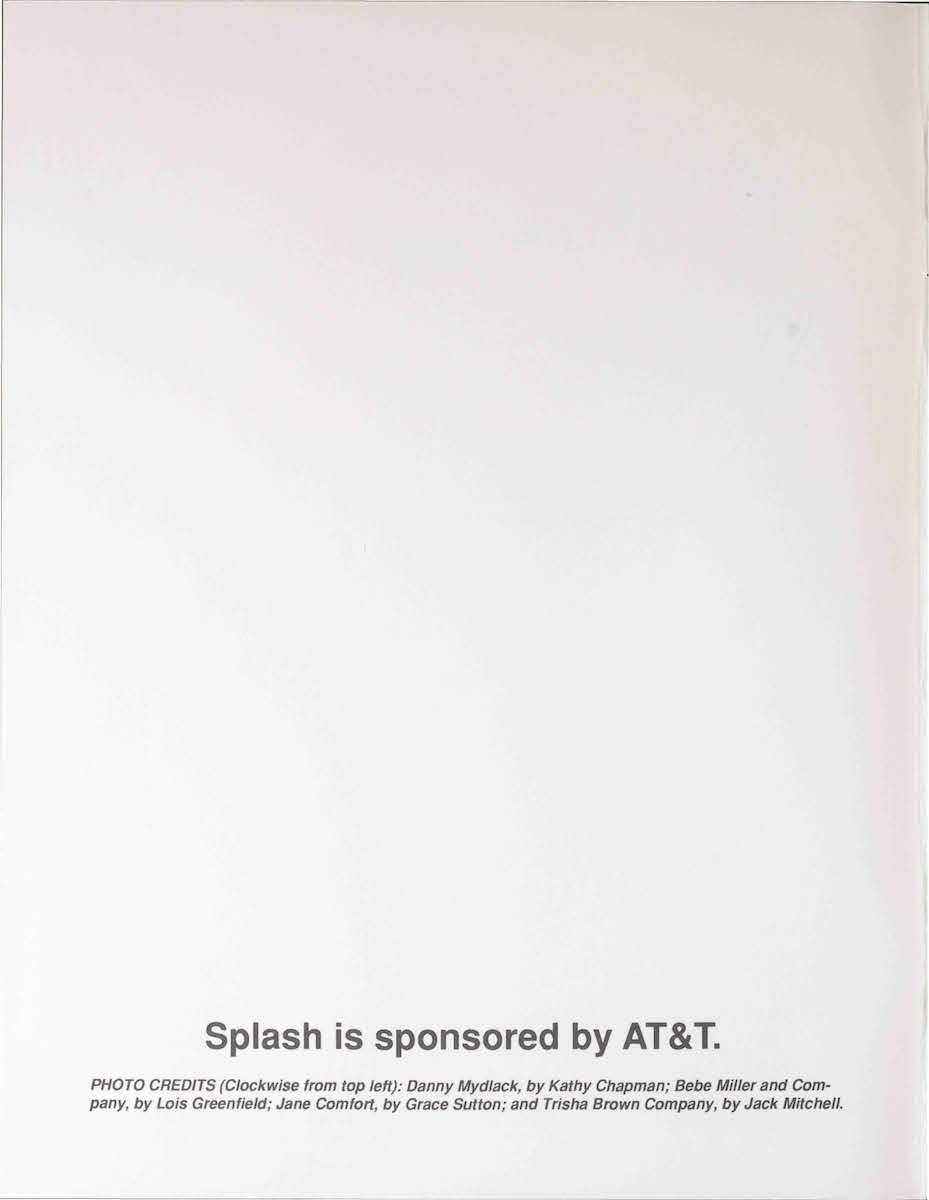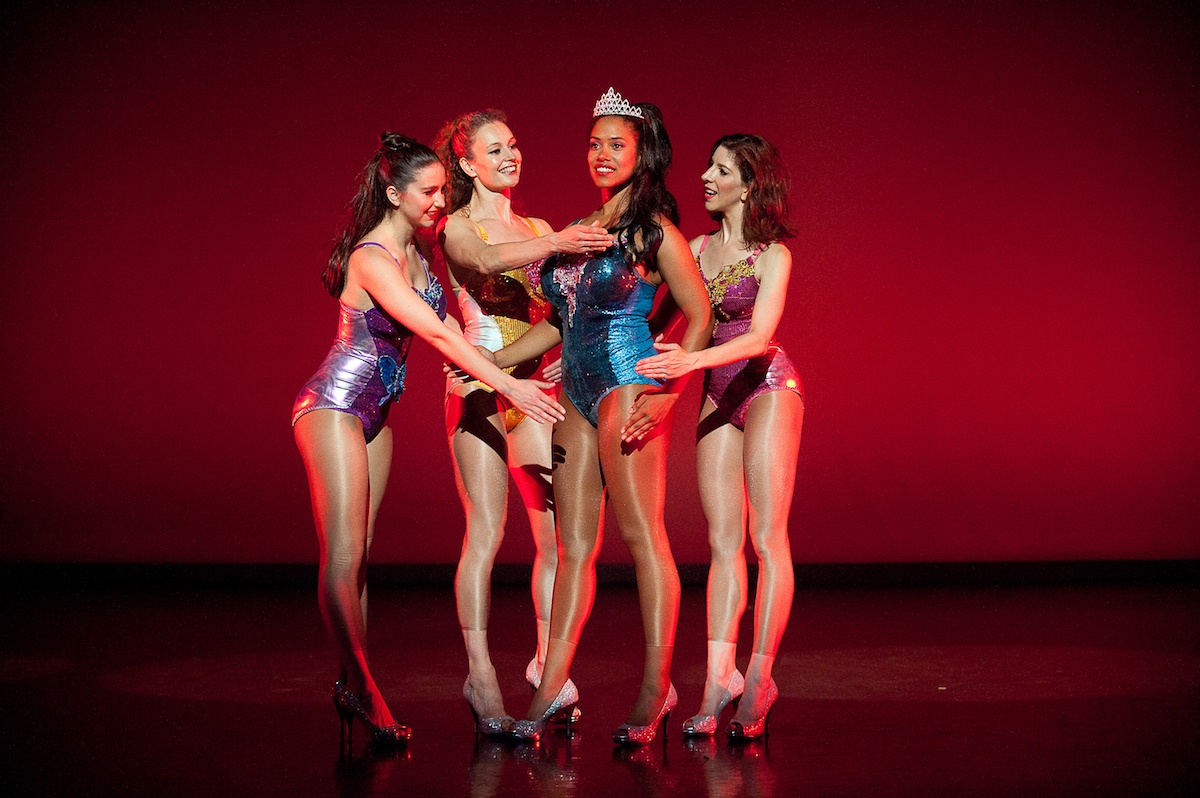Jane Comfort
Communication on multiple levels is critical to Jane Comfort’s choreographic vision. Her text-driven dances combine the voice with the moving body to demonstrate the significant eloquence of dance. Comfort has noted that when she started to talk in her dance performances, “in 1979, almost no one was, but I knew [it] was the right path for me…” In addition, she typically writes the spoken words that her dances employ. She believes that “by writing my own texts, I have been more in touch with the rhythms that [enter] our bodies.” Comfort combines these elements in such a way that they take on meaning that becomes much more than the sum of their parts.
Early Works
Comfort’s early works were deliberately on a small scale—first, a 28-minute concert with dances for hands. She began by exploring American Sign Language and eventually inventing her own form of communication, with unique gestures and rhythms. It was in her early exploration of gesture and its meaning that she determined that language was and is the defining element in her work.
Talking and Dancing
The interaction between the dancing and talking is in constant transition in Comfort’s dances. There is no limit to the physical vocabularies Comfort explores, as she cultivates a personal and idiosyncratic movement style derived from a wide scope of physical activities, including a variety of dance techniques, as well as gestures, and pedestrian activities. Comfort draws on a range of techniques and experiences for her work. She became interested in polyrhythms by studying Afro-Brazilian dance, and she became interested in puppetry when traveling in Bali. Those experiences translate into materials for her postmodern dancemaking.
Similarly, Comfort sifts through words, determining the sequence and syntax, the content and the delivery, the timing, the speed and rhythm of the talking. Most often, the manner and delivery of the speaking are not exaggerated, but casual, conversational. Despite this regularity, the movement is not so easy to categorize in most of Comfort’s dances. Talking while dancing takes tremendous concentration and skill on the part of the performers. In combining the two, dancers engage their bodies in new ways, testing their memories, dexterity, and breath control.
In some of her works, Comfort challenges the dependence audiences may place on words by suggesting a context where the words and their meanings make sense, and then negating that context. For example, in Soap Opera (performed at the Pillow in 1988), three dancers stage a banal tale of romance and deceit. A man and a woman enact an amorous scene only to be interrupted by the alleged “real-life” partner of the man. The stereotype of the jealous woman is played broadly, familiarly, with sweeping gestures. The movement and the talking suddenly reverse direction, however, and the piece unwinds backward in the exact order it developed. The jealous gestures retrograde, the tender embraces come apart, and the text is nonsense. Comfort allows the audience to think that the surprise of the piece resides in the interruption of the staged scene by the third character, but by rewinding the whole scene she further thwarts convention. She uses the recognizable narrative of a love triangle to lull the audience—only to abruptly topple our understanding. The performers’ ability to move as easily backwards as forward through the text and movement heightens the capriciousness of the piece.
Underground River (1998), made in part during a PillowWorks co-commissioning residency, explores the two conflicting realities of a young woman in a coma. Comfort came up with the idea when she was sidelined with acute back pain, thinking that she might never get up again, let alone dance or make another dance. With this piece, Comfort added another means of communication to the artistic landscape. Working with composer Toshi Reagon, Comfort built a musical score that paralleled her investigations with words and movement. Meaningless words play against intelligible speech to create oppositional worlds, with the contrast building a tension between two distinct realms in which different voices clamor, tugging for the full presence of the young woman who has one foot in each world. The dancers, already trained in dancing and talking, now become vocalists of the haunting melodies in performance. Their tuneful singing creates an alluring world rich and flavored with harmonies; it is at once tempting and spiritual.
Comfort, who is white, gathered a multi-racial cast of collaborators and performers for her dance-opera Asphalt (2002). She collaborated not only with musicians on the vocal score, but she also worked with a writer and a dramaturg. Comfort is the choreographer and director, Carl Hancock Rux did the book and lyrics, Toshi Reagon wrote the vocal score, and DJ Spooky composed an instrumental score.
The narrative work, set in a run-down tenement building under threat of a wrecking ball, is filled with characters including Racine, a homeless DJ, and Couchette, a dancer. Also threading through the building and the story are Racine’s ancestors. In one scene, DJ Racine spins club music for a dance party. The music combines with the setting of the condemned building to evoke rave culture. Comfort and her collaborators drew on the physical practices as well as hip hop culture to inform and shape this piece. It combines with Comfort’s rich gestural language and athletic postmodern dance.
Some of Comfort’s works deliberately grapple with gender politics and feminist perspectives, such as S/he (1995), Beauty (2012), and Three Bagatelles for the Righteous (1996). S/he presents distinctly gendered roles by drawing on familiar, pedestrian movements and contemporary language only to defy these stereotypes. In the opening section, once the characters are clearly established as a man and a woman, they shift genders, changing costumes and taking on the other character’s mannerisms of speech and gesture. Three Bagatelles for the Righteous (performed at the Pillow in 1999) takes aim at political and religious leaders, with sound bites from politicians mixed to make an almost musical score. In the first section, Comfort uses the deceptively simple metaphor of musical chairs to represent shrinking social programs. In the second section, Comfort makes visible the criticism of politicians, with Bob Dole and Bill Clinton appearing as puppets, although they are danced by live performers. Dole appears as a bunraku puppet, with multiple puppeteers manipulating him. In contrast, Clinton is only operated by a single puppeteer, who may or may not be Hillary Clinton. The final section opens with two dancers performing a fan dance to Balinese music, shifting from takes the specificity of United States to global politics.
With Beauty, Comfort turned her political and choreographic eye to notions of female beauty, with life-size Barbies leading the action.
Dance Dramaturgy
Comfort worked with dramaturg Anne Davison on Beauty to manage the multiple elements of the work, including character development, text, and overall narrative arc.
As dance critic Claudia La Rocco wrote, “Barbie isn’t the most flexible gal, after all (though she does have just about the most dependable relevé around). Were Ms. Comfort a more forgiving choreographer, she might work around this. But Beauty, which is…wickedly funny…isn’t interested in forgiveness. It’s interested in all the ways women are punished by (and punish themselves with) unattainable ideals and cherished codes of conduct.” “She’s Plastic, Beautiful and Rules the World” New York Times, July 1, 2011.
By approaching dancemaking on aural, kinesthetic, and visual levels, Comfort challenges assumptions about what ingredients constitute a dance. By incorporating a versatile palette of elements, she makes insightful, music- and text-filled dances.
PUBLISHED June 2017




